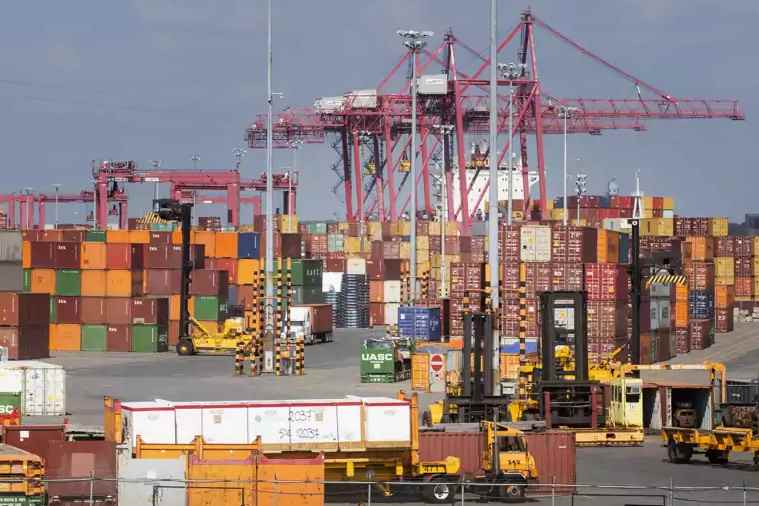(Vancouver) Trade between China and Canada hit record highs in 2022, with imports from China crossing the $100 billion mark for the first time, according to Statistics Canada data.
Economists and other observers say companies are looking past political tensions between the two countries as demand increases and supply chains return to normal functioning in a post-pandemic world.
James Brander, professor of economics at the Sauder School of Business at the University of British Columbia, pointed out that in the absence of government policies to the contrary – such as those currently restricting trade with Russia – businesses will not prioritize politics.
“Of course, yes, there are tensions. But economic or trade flows, and economic activity in general, are not much affected by political tensions, unless there is an explicit policy,” Brander explained.
Statistics Canada data shows that Canada imported a record $100,027,968,000 in goods from China last year, which was up 16% from $86 billion in 2021.
The largest category of imports in 2022 was consumer goods, at 31 billion, followed by electronic and electrical equipment, worth 28 billion.
Data shows Canadian exports to China also hit an all-time high of $27.9 billion, recovering from a slump that followed the 2018 arrest of Huawei’s Chinese executive Meng Wanzhou and the Chinese detention of Canadians Michael Spavor and Michael Kovrig.
Last year, China lifted a three-year ban on Canadian canola that was imposed following the arrest of Meng, who has since returned to China.
But tensions between Ottawa and Beijing remain high, amid allegations of Chinese interference in Canadian elections and government confirmation of Chinese surveillance operations.
Anastasia Ufimtseva, program manager at the Asia-Pacific Foundation of Canada, noted that although economics and politics are “very intertwined”, it could take a long time for them to align.
In the meantime, businesses will respect the dynamics of global trade and seek cost-effective solutions, she explained.
“Potentially in the future we could see the changes in the trade, they could ripple through, but we still have to be careful about all the factors that companies take into account when making their decision. »
Mme Ufimtseva added that it was not easy for companies to find alternatives to China, the world’s second largest economy.
“Even though many countries say that after the pandemic they want to establish an alternative supply chain structure, it is expensive and difficult to change when a company has been established and has its suppliers. It will take a long time to find alternatives to build this infrastructure,” said Mr.me Ufimtseva.
She added that existing supply chains had stabilized after the pandemic disruptions.
Economist Daniel Trefler of the University of Toronto said manufacturing supply chains cannot be moved easily.
“Of course, that’s extremely difficult to do,” Trefler said. It’s impossible to do in a short period of two, three, four years. »
The Chinese consulate in Vancouver last week rejected a newspaper article Globe and Mail outlining alleged efforts to oust candidates seen as hostile to Beijing. The consulate said the report “smeared and discredited” China.
The Department of Defense and the Canadian Armed Forces, for their part, confirmed last week that they are aware of recent efforts by China to conduct surveillance operations in Canadian airspace and waters.
This dispatch was produced with the financial assistance of the Meta Exchanges and The Canadian Press for the news.
